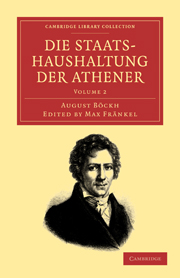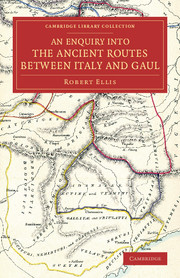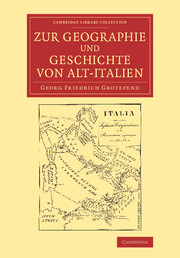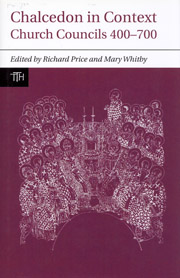Refine search
Actions for selected content:
23990 results in Ancient history
Conclusions
- from Part III - Prison and penance
-
- Book:
- Prison, Punishment and Penance in Late Antiquity
- Published online:
- 05 September 2015
- Print publication:
- 05 June 2015, pp 342-353
-
- Chapter
- Export citation
Acknowledgements
-
- Book:
- Prison, Punishment and Penance in Late Antiquity
- Published online:
- 05 September 2015
- Print publication:
- 05 June 2015, pp ix-xi
-
- Chapter
- Export citation
Conclusions
- from Part II - Prison and punishment
-
- Book:
- Prison, Punishment and Penance in Late Antiquity
- Published online:
- 05 September 2015
- Print publication:
- 05 June 2015, pp 275-278
-
- Chapter
- Export citation
Chapter 10 - Monastic confinement and imperial justice
- from Part III - Prison and penance
-
- Book:
- Prison, Punishment and Penance in Late Antiquity
- Published online:
- 05 September 2015
- Print publication:
- 05 June 2015, pp 314-341
-
- Chapter
- Export citation

The Classical Museum
- A Journal of Philology, and of Ancient History and Literature
-
- Published online:
- 05 June 2015
- Print publication:
- 13 December 2012
- First published in:
- 1846

Die Staatshaushaltung der Athener
-
- Published online:
- 05 June 2015
- Print publication:
- 15 July 2010
- First published in:
- 1886

The Classical Museum
- A Journal of Philology, and of Ancient History and Literature
-
- Published online:
- 05 June 2015
- Print publication:
- 13 December 2012
- First published in:
- 1844

An Enquiry into the Ancient Routes between Italy and Gaul
- With an Examination of the Theory of Hannibal's Passage of the Alps by the Little St Bernard
-
- Published online:
- 05 June 2015
- Print publication:
- 21 August 2014
- First published in:
- 1867

Zur Geographie und Geschichte von Alt-Italien
-
- Published online:
- 05 June 2015
- Print publication:
- 01 January 2015
- First published in:
- 1840
Appendix III - Places of monastic confinement
- from Appendices
-
- Book:
- Prison, Punishment and Penance in Late Antiquity
- Published online:
- 05 September 2015
- Print publication:
- 05 June 2015, pp 380-386
-
- Chapter
- Export citation
Chapter 6 - Private power and punitive confinement
- from Part II - Prison and punishment
-
- Book:
- Prison, Punishment and Penance in Late Antiquity
- Published online:
- 05 September 2015
- Print publication:
- 05 June 2015, pp 151-193
-
- Chapter
- Export citation

A History of Ancient Geography
-
- Published online:
- 05 June 2015
- Print publication:
- 30 October 2014
- First published in:
- 1897
Chapter 9 - Monastic confinement and ecclesiastical justice
- from Part III - Prison and penance
-
- Book:
- Prison, Punishment and Penance in Late Antiquity
- Published online:
- 05 September 2015
- Print publication:
- 05 June 2015, pp 281-313
-
- Chapter
- Export citation

A Treatise on Hannibal's Passage of the Alps
- In Which his Route Is Traced over the Little Mont Cenis
-
- Published online:
- 05 June 2015
- Print publication:
- 06 November 2014
- First published in:
- 1853

A History of the Later Roman Empire
- From Arcadius to Irene (395 A.D. to 800 A.D)
-
- Published online:
- 05 June 2015
- Print publication:
- 05 March 2015
- First published in:
- 1889

Chalcedon in Context
- Church Councils 400-700
-
- Published by:
- Liverpool University Press
- Published online:
- 05 June 2015
- Print publication:
- 01 March 2011
-
- Book
- Export citation
Chapter 6 - Gaul
- from Part I - An overview of athletics in late antiquity
-
- Book:
- The End of Greek Athletics in Late Antiquity
- Published online:
- 05 September 2015
- Print publication:
- 28 May 2015, pp 151-155
-
- Chapter
- Export citation
Part II - Agones in a changing world
-
- Book:
- The End of Greek Athletics in Late Antiquity
- Published online:
- 05 September 2015
- Print publication:
- 28 May 2015, pp 173-348
-
- Chapter
- Export citation
Bibliography
-
- Book:
- The End of Greek Athletics in Late Antiquity
- Published online:
- 05 September 2015
- Print publication:
- 28 May 2015, pp 349-377
-
- Chapter
- Export citation
Dedication
-
- Book:
- The End of Greek Athletics in Late Antiquity
- Published online:
- 05 September 2015
- Print publication:
- 28 May 2015, pp vii-viii
-
- Chapter
- Export citation
